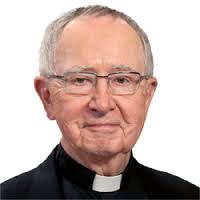 To begin the Church Documents podcast series, I chose to start with Vatican II. It’s important to note that more than half of US Catholics were born after Vatican II, a population which includes me. However, I’m surprised to find younger teachers and staff members who cannot explain how Vatican II impacted the Church. If we don’t study the council itself, we fall victim to the generalizations about the council (e.g. it led to a decrease in vocations).
To begin the Church Documents podcast series, I chose to start with Vatican II. It’s important to note that more than half of US Catholics were born after Vatican II, a population which includes me. However, I’m surprised to find younger teachers and staff members who cannot explain how Vatican II impacted the Church. If we don’t study the council itself, we fall victim to the generalizations about the council (e.g. it led to a decrease in vocations).
In addition, if we’re going to study Church documents on Catholic education, we need to start here because each document in the last 50 years has been shaped by Vatican II. That is why I decided to start the series with a podcast about the context of Vatican II.
When discussing Vatican II with Fr. John O’Malley, I was determined to ask about 5 areas of impact. Fr. O’Malley presents a remarkably concise explanation for each. My 20-minute conversation with Fr. O’Malley is piled with insights.
The 5 areas of impact:
- Scripture: O’Malley discusses how Vatican II is a continuation of a movement that had already been boiling in the church.
- Salvation outside the Church: Fr. O’Malley rightfully brings up the changing perception of salvation and the Catholic Church’s role.
- Liturgy: Fr. O’Malley discusses the way the Mass looked before the Council and the ways it changed as a result of Vatican II.
- Engagement with the World: Fr. O’Malley discusses the loss of the “fortress” model and the Church’s desire for aggiornamento
- Religious Orders & Vocations: O’Malley discusses the vocation crisis and reasons for it. In addition, Fr. O’Malley discusses how the approach to vocations changed.
Fr. O’Malley also has a way of connecting historical trends, previous councils, and other trends to explain the message and impact of the Council. In this book What Happened at Vatican II, he points out the language of Vatican II marked a significant departure and shaped the way Church documents were formulated.
Perhaps the part of the conversation that spoke to me the loudest was his line that “Vatican II gave the Church, and the papacy, a new job description.” He goes on to explain that the pope was now being called to be an agent of reconciliation and find ways to work with all people in order to alleviate suffering through wars, famines, persecutions, and the like. More than his other comments, this one speaks to how we perceive the pope as no longer as head of state but certainly more than a figurehead.
I encourage you to listen to the conversation and subscribe to the Catholic School Matters podcast so you can learn with me as we read our way through Church documents on Catholic education.